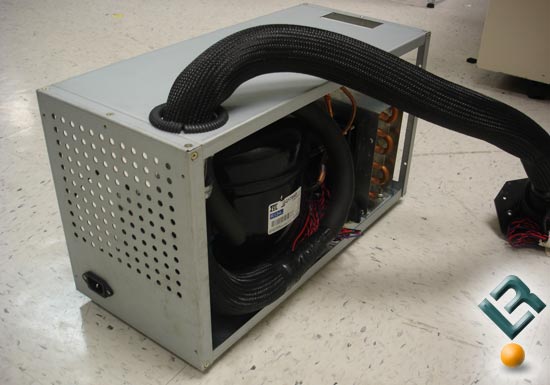Intel: A Company Seemingly Unable to Move Up the Confidence Curve
March 6, 2020
DarkCyber noted stories about Intel’s quantum computing innovation. We chose to push the story into the “maybe later” file. Now is the time. The write up is “Intel Details ‘Horse Ridge’ Cryogenic Quantum Computing Control Chip.” There are some tough-to-believe quantum computing announcements zipping around the interweb’s tubes. A revolution will be forthcoming from a thermostat and weapons control systems vendor. There was an announcement about a quantum computer that cost less than a $1,000. (No, DarkCyber did not purchase one, nor did any of the team sign up for a multi hour lecture about the wonders of quantum computing. Science fiction is not on the corona virus menu unless one globe trots to advanced technology conferences.) Now quantum computers are going to be — really soon — fast computers, and fast computers need chips and stuff.
So what’s with the Horse Ridge thing?
Intel wants to control those very expensive quantum computers. The company has announced a”cryogenic quantum control chip.” Below is a snap of what’s needed for a modest cryogenic set up about the size of an old fashioned school lunch box:

Here’s a more robust set up for a mostly working quantum computer. The installation is about the size of soccer mom’s van.

Intel is going to control these types of units plus other assorted gizmos required to make quantum computing a useful system… sometime.
The Horse Ridge write up chirps:
The semiconductor giant and QuTech — a partnership between TU Delft and the Netherlands Organization for Applied Scientific Research (TNO) — detailed in a research paper that where scalability is concerned, the integrated System-on-a-Chip design can integrate four radiofrequency (RF) channels into a single 4x4mm device. According to Intel, this was achieved by using Intel’s 22nm FFL CMOS technology. The company added that each channel could control up to 32 qubits to leverage “frequency multiplexing” — a technique described by Intel as dividing the total bandwidth available into a series of non-overlapping frequency bands — each of which could be used to carry a separate signal.
If the write up is accurate, Intel did not do this work alone. The development of a control system is not actually a quantum computer. But Intel has a quantum marker in the Web indexes.
Does Horse Ridge work? Sure, under precise lab conditions, DarkCyber is confident the chip does something; otherwise, the PR professionals would not have the green light to tell DarkCyber and the world that Intel, like the thermostat vendor, is “into” quantum computing.
Why comment on this story now?
The answer is that DarkCyber spotted ITPro’s article “Intel Unable to Fix Critical Hardware-Encoded CPU Flaw.” The write up states what is an allegedly accurate statement of the limitations of Intel’s designers and engineers:
Some of the most widely-used Intel chips released over the last five years are embedded with a critical vulnerability at the hardware level, as well as within the firmware. A flaw has been discovered in the Converged Security and Management Engine (CSME) boot ROM on most Intel chipsets and system on a chip (SoC) units available today, apart from 10th-gen CPUs with Ice Point components.
The write up includes this interesting statement:
The range of devices afflicted is very broad, according to Intel. These include CSME-ready chips with SPS firmware for servers, TXE firmware for tablets or low-power devices, DAL software for machines ranging from workstations to IoT devices, and the AMT module used for remote IT management.
Yes, Intel’s credibility seems to be making modest progress. Furthermore, the Horse Ridge announcement makes clear that progress comes by leveraging a non US organization’s innovations as evidence of quantum traction.
Intel needs snow tires, chains, and a four wheel drive to make it up Horse Ridge and pull itself out of the rut of that allows an attacker to conduct arbitrary code execution on lots of personal computers, servers, and other devices.
Net net: Intel seems to face a Boeing Max like challenge.
Stephen E Arnold, March 6, 2020


